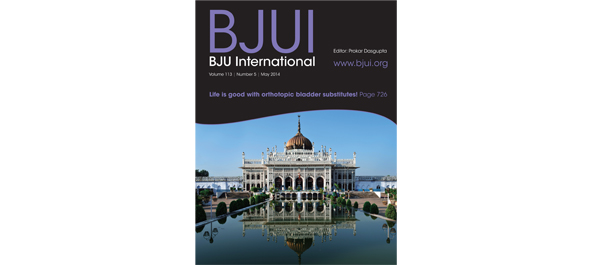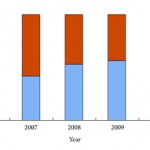Editorial: How are we doing with percutaneous nephrolithotomy in England?
Over the past several years, with publications of studies evaluating multiple aspects of nephrolithiasis using large databases, our overview of kidney stone disease has vastly expanded. The most recent addition by Armitage et al. [1], published in this issue of BJUI, gives us a view of percutaneous nephrolithotomy (PCNL) outcomes in England that we otherwise would have difficulty seeing without tapping into a database study. Several salient features of this investigation are worth pointing out.
With any study comes the uncertainty of its validity. Evidence-based medicine (EBM) theory dictates we first ask ‘Are the results valid?’ rather than ‘What are the results?’. This study reports similar outcomes to a prior database study of the BAUS, giving us confidence that data from different sources still produce somewhat similar outcomes, hence adding validity to both studies [2]. Moreover, it is further reassuring that the type of epidemiological source of the information was derived from completely different origins, i.e. Armitage et al. [1] used an administrative database from Hospital Episode Statistics (HES) to create their outcomes while the BAUS used a voluntary online prospective database for British surgeons.
The second question that forms the basis of EBM is ‘What are the results?’. The HES data confirmed several findings of PCNL seen in other studies, including in both international series from the Clinical Research Office of the Endourological Society (CROES) as well as American administrative database studies using the Nationwide Inpatient Sample (NIS) [3-5]. Overall complications occur anywhere from 6% to 15% of the time, with the most common complications including infection and bleeding. Compared with these recent studies, the HES study reports lower bleeding, UTI and sepsis rates, which the authors admit could represents an under-reporting phenomenon. Mortality is an exceedingly rare event in all these studies. Overall, complication rates are comparable and give us assurance that they align approximately with other worldwide data. Another important finding with the HES database is the decreased length of stay for patients over time. Lastly, from a physician credentialing standpoint this study has relevant findings. It suggests that the HES administrative database may be a viable source of information to assist in the surgeon validating process.
Weaknesses of administrative database studies include the lack of detail that prospective clinical databases provide. Clinically pertinent PCNL endpoints are inherently absent for both patient and surgical domains. Missing patient information includes stone size, stone-free rates, and patient obesity, which are all reflections of clinical case difficulty. Missing critical surgical information includes where (upper, mid or lower calyx), who (urologist or radiologist) and how (balloon, serial dilators) access is obtained. As mentioned above, the uncertainty of under-coding clinical information always exists.
Why are large database studies, including this article, important? These studies are timely given the recent advocating of retrograde ureteroscopic treatment of large renal calculi [6]. Publication of low complication rates with equal efficacy in an outpatient setting has made ureteroscopic treatment of partial and staghorn renal calculi attractive. Even laparoscopic anatrophic nephrolithotomy has been advocated to further challenge the ‘gold standard’ treatment of PCNL [7]. It is therefore clinically important that British PCNL complication rates are low and that length of stay is decreasing to affirm the role that PCNL has with large renal calculi.
The role of PCNL surgery for renal calculi continues to develop but, more importantly, the value of these large epidemiological studies also continues to grow. They help us to look not only from the ground level but also give us perspective from a different, if not ‘higher’ level, which taken together helps shapes our interpretation of PCNL.
Department of Urology, UC San Diego Health System, San Diego, CA, USA
References
- Armitage JN, Withington J, Van der Meulen J et al. Percutaneous nephrolithotomy in England: practice and outcomes described in the hospital episode statistics database. BJU Int 2014; 113: 777–782
- Armitage JN, Irving SO, Burgess NA, British Association of Urological Surgeons Section of Endourology. Percutaneous nephrolithotomy in the United Kingdom: results of a prospective data registry. Eur Urol 2012; 61: 1188–1193
- de la Rosette J, Assimos D, Desai M et al. The Clinical Research Office of the Endourological Society Percutaneous Nephrolithotomy Global Study: indications, complications, and outcomes in 5803 patients. J Endourol 2011; 25: 11–17
- Mirheydar HS, Palazzi KL, Derweesh IH, Chang DC, Sur RL. Percutaneous nephrolithotomy use is increasing in the United States: an analysis of trends and complications. J Endourol 2013; 27: 979–983
- Ghani KR, Sammon JD, Bhojani N et al. Trends in percutaneous nephrolithotomy use and outcomes in the United States. J Urol 2013; 190: 558–564
- Aboumarzouk OM, Monga M, Kata SG, Traxer O, Somani BK. Flexible ureteroscopy and laser lithotripsy for stones >2 cm: a systematic review and meta-analysis. J Endourol 2012; 26: 1257–1263
- Aminsharifi A, Hadian P, Boveiri K. Laparoscopic anatrophic nephrolithotomy for management of complete staghorn renal stone: clinical efficacy and intermediate-term functional outcome. J Endourol 2013; 27: 573–578



